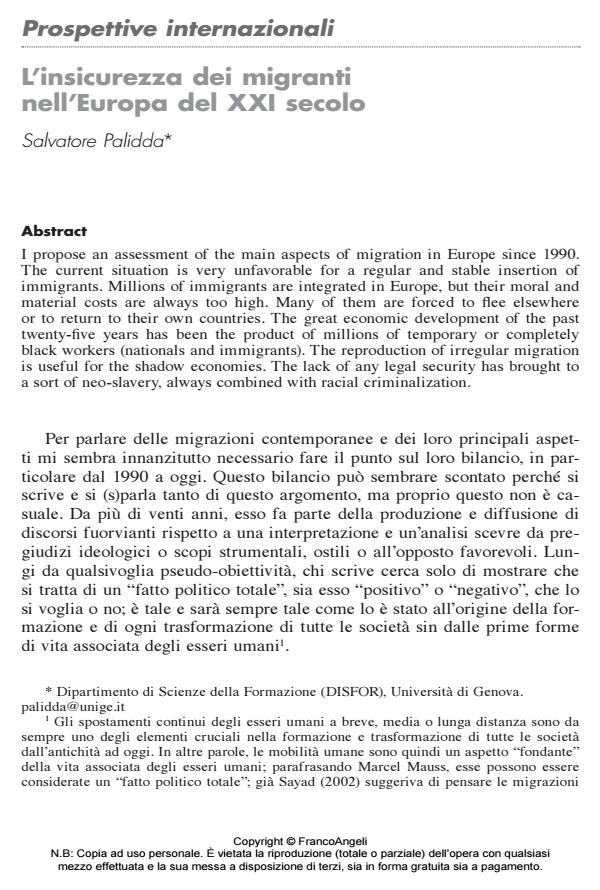L’insicurezza dei migranti nell’Europa del XXI secolo
Journal title SICUREZZA E SCIENZE SOCIALI
Author/s Salvatore Palidda
Publishing Year 2013 Issue 2013/1
Language Italian Pages 12 P. 143-154 File size 257 KB
DOI 10.3280/SISS2013-001012
DOI is like a bar code for intellectual property: to have more infomation
click here
Below, you can see the article first page
If you want to buy this article in PDF format, you can do it, following the instructions to buy download credits

FrancoAngeli is member of Publishers International Linking Association, Inc (PILA), a not-for-profit association which run the CrossRef service enabling links to and from online scholarly content.
The Hotel House, a big apartment hotel near Porto Recanati, is a place in which a huge and varied immigrant population is presently living. Its widespread and mostly negative popularity is because of the number of cases of illegality and crime. The research has the aim to reconstruct the sense of exclusion pointed out by many inhabitants, making the compound appear far from an intercultural context. The main priority asked by the foreign residents is to improve security fighting against criminal acts and decay, and promoting external connections and the effects of internal social capital.
Salvatore Palidda, L’insicurezza dei migranti nell’Europa del XXI secolo in "SICUREZZA E SCIENZE SOCIALI" 1/2013, pp 143-154, DOI: 10.3280/SISS2013-001012